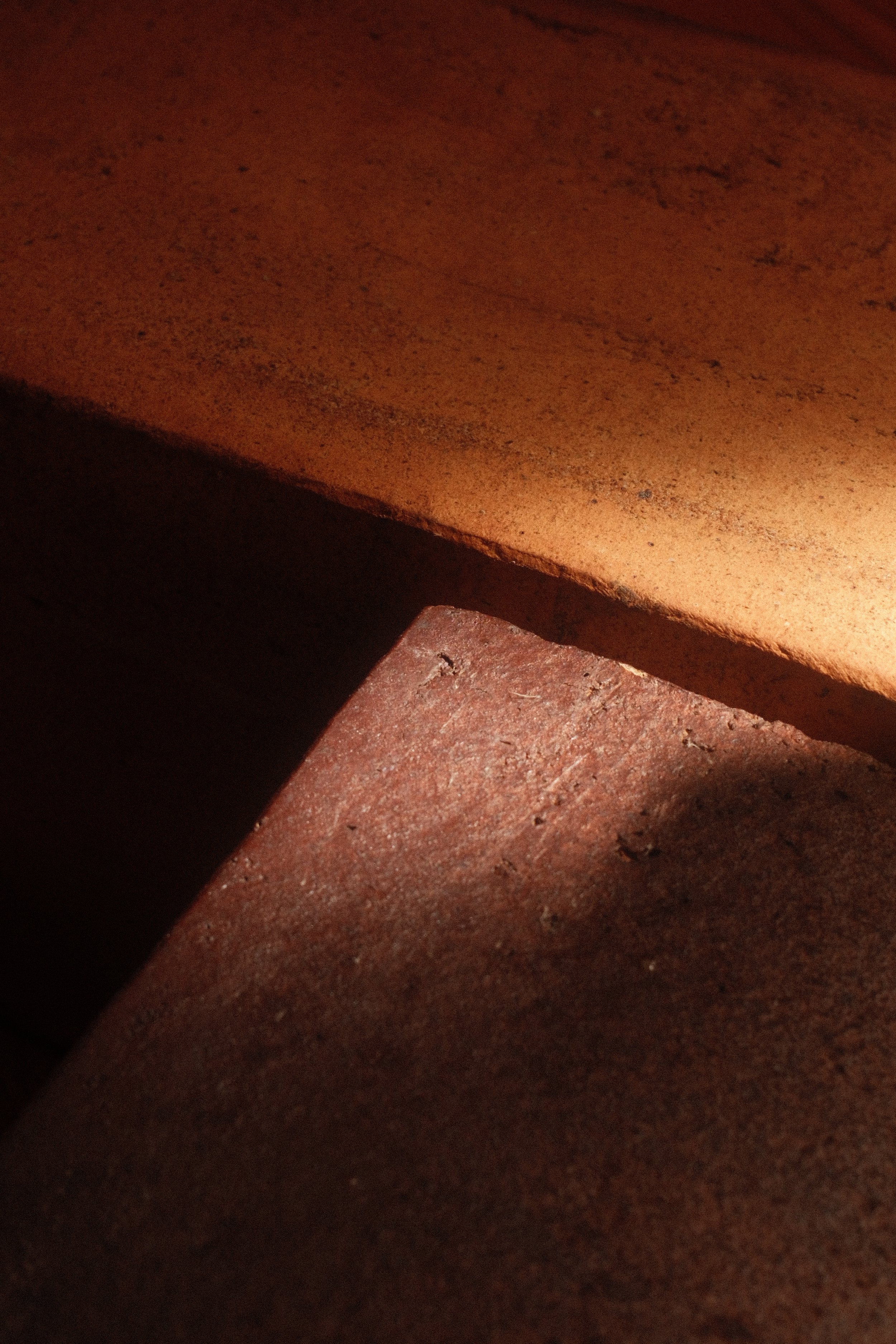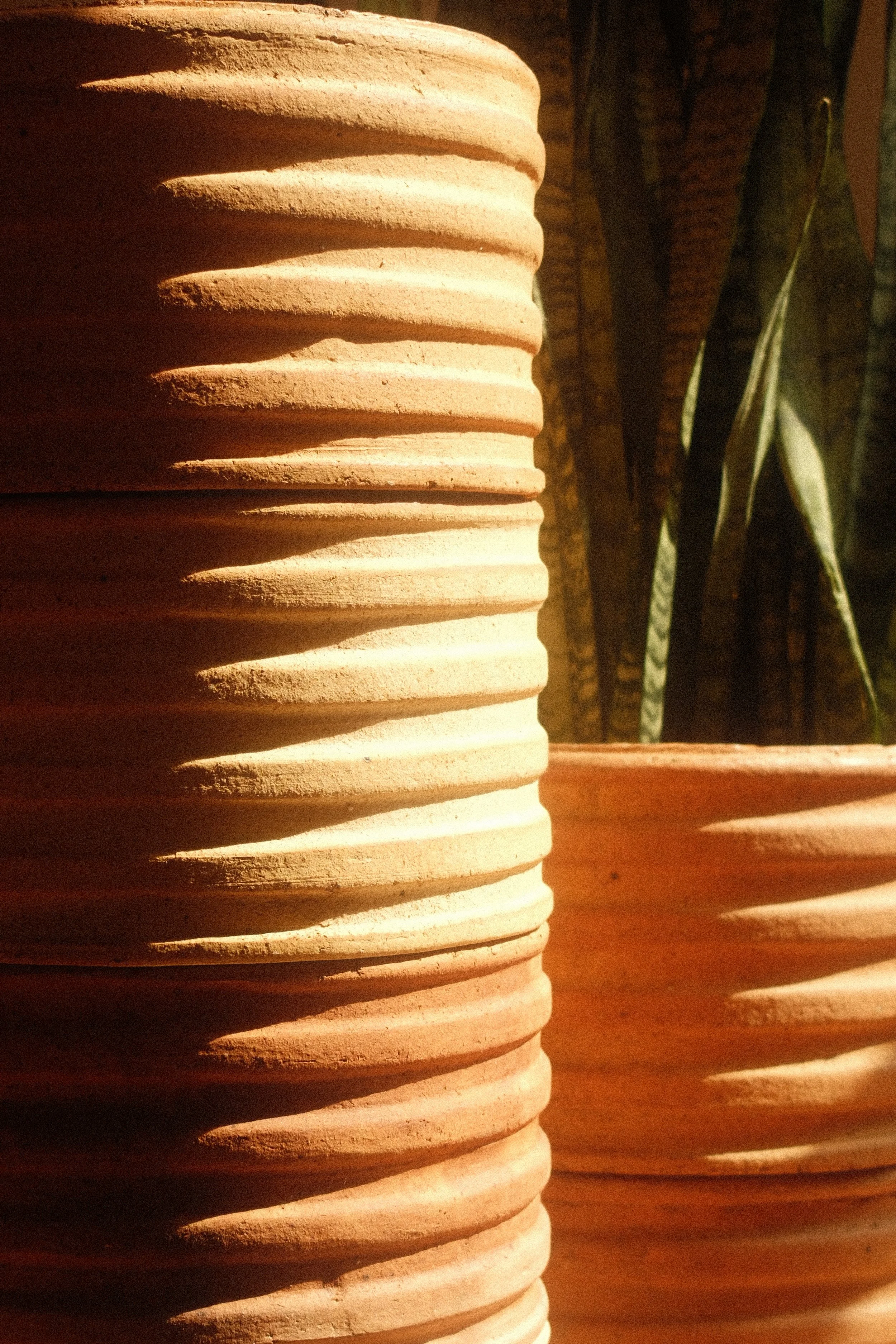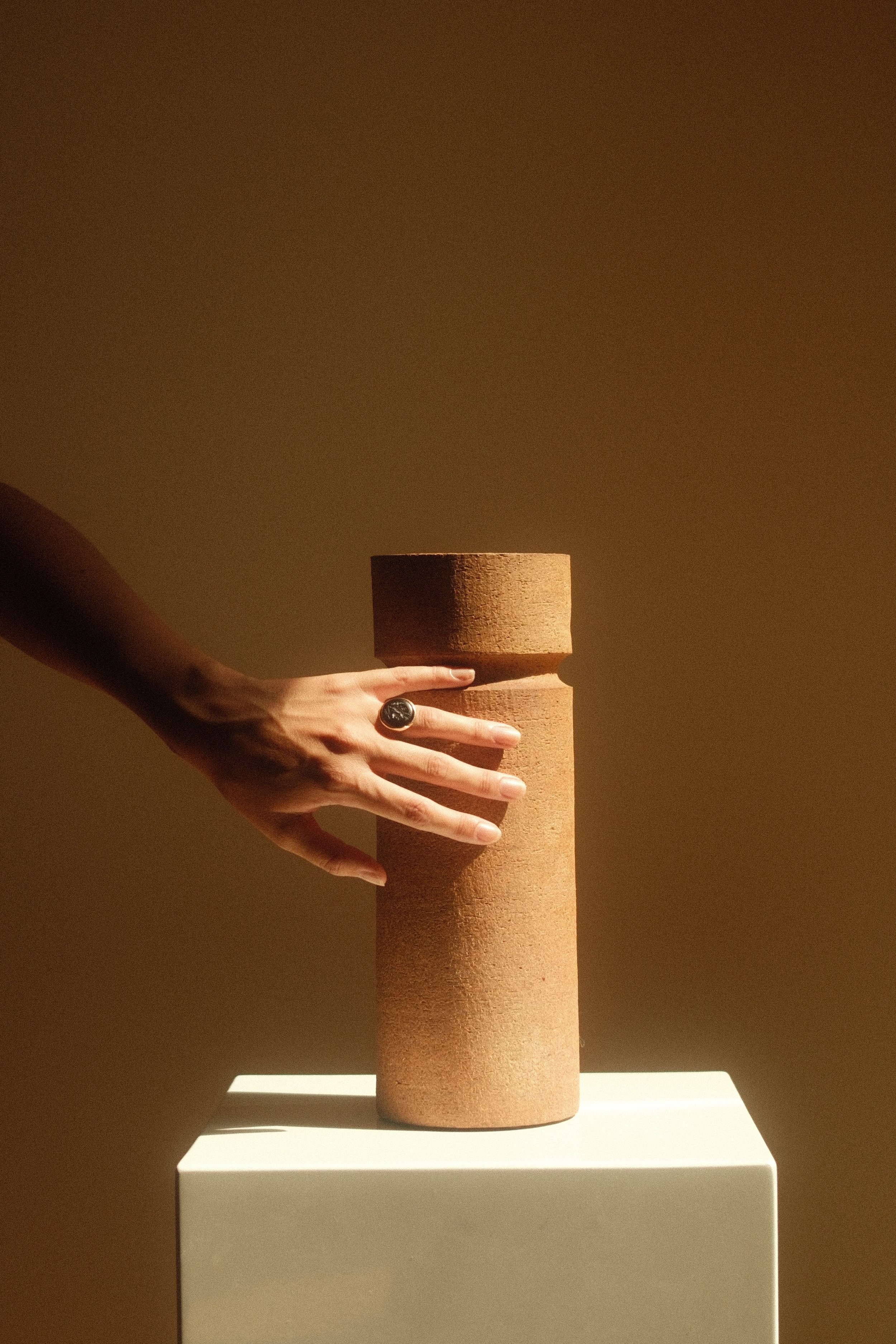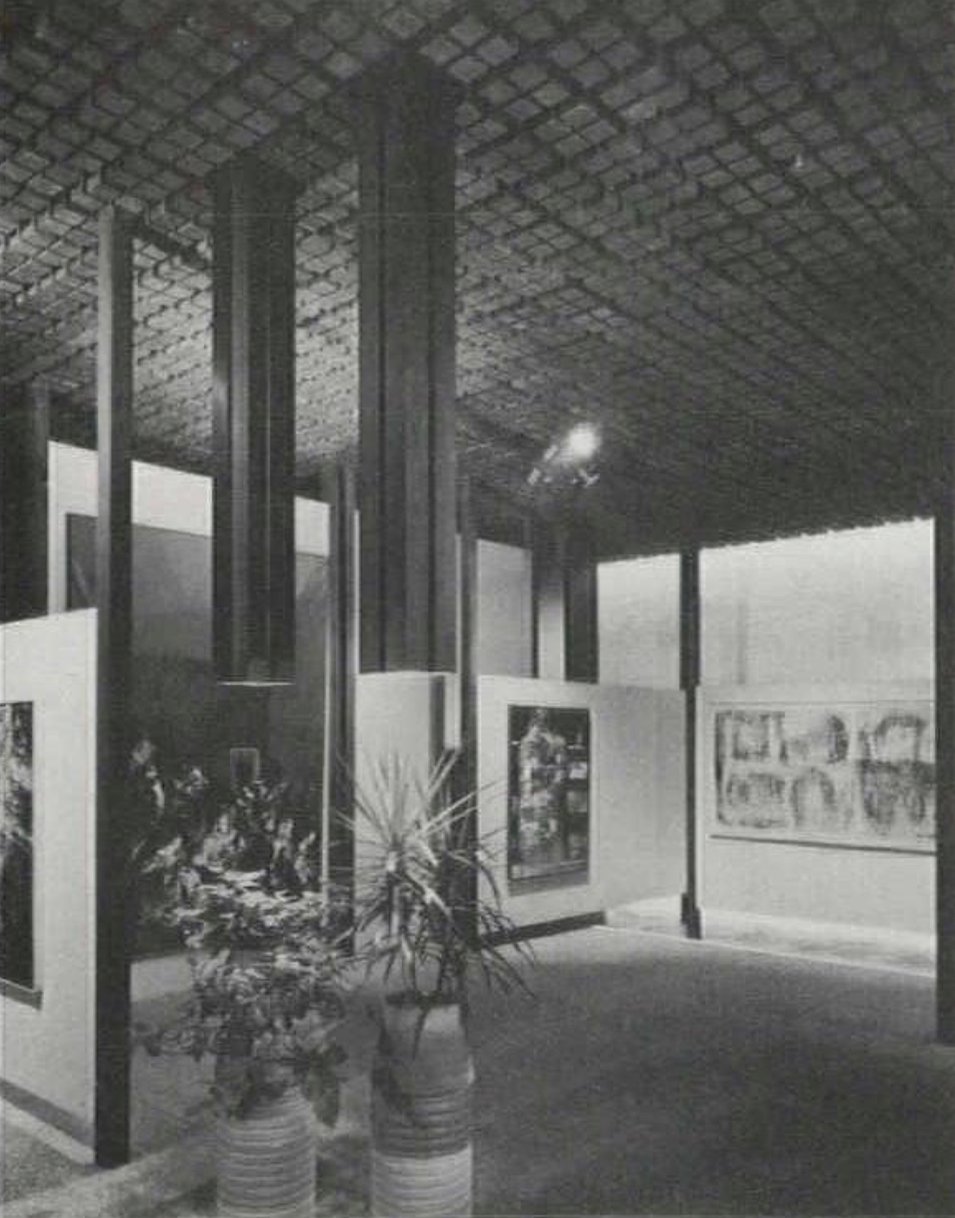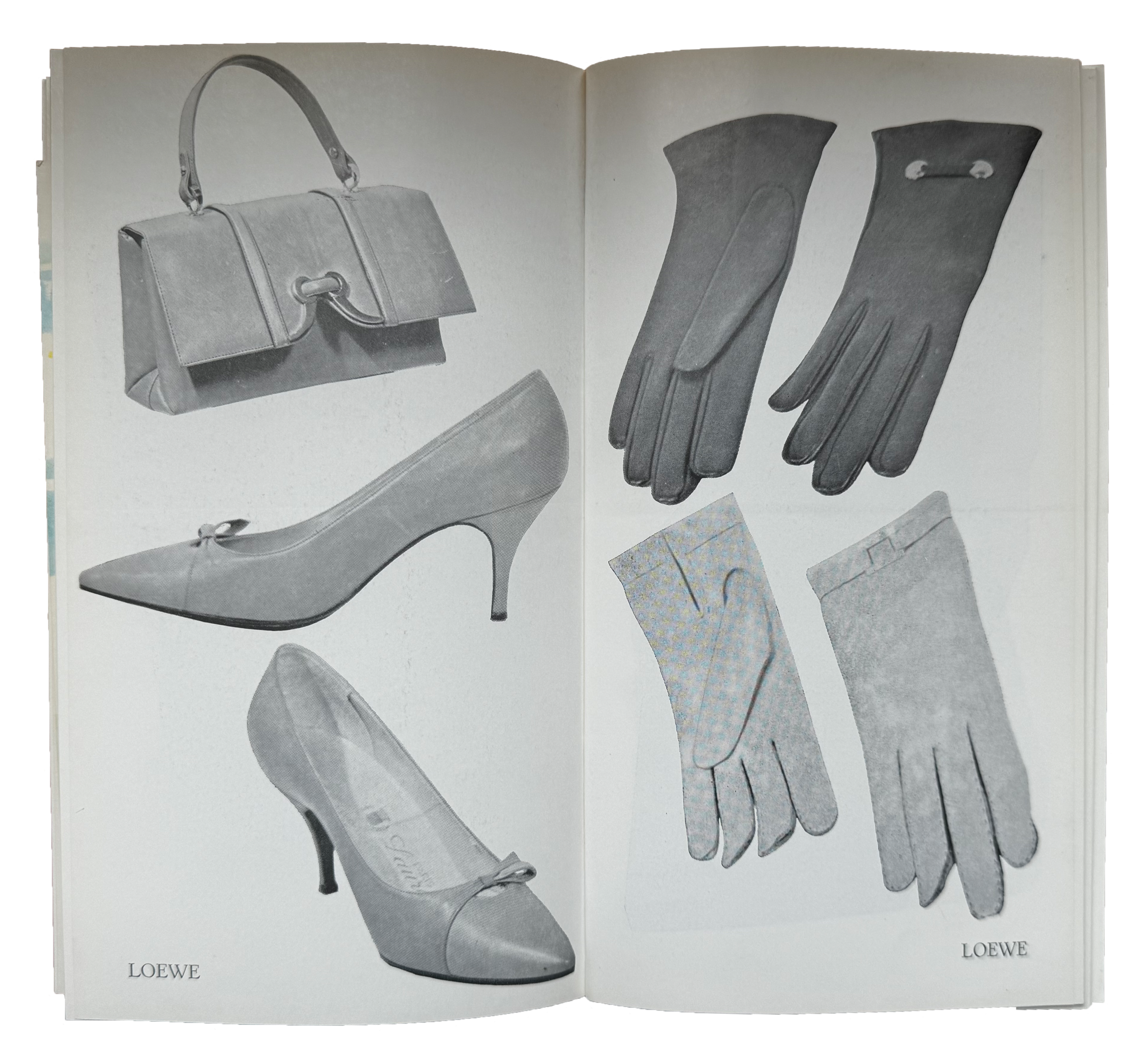Antonio Salvador Orodea’s unglazed work, especially the architectonic vessels done for the 1964 New York World’s Fair, reflect the best of Spanish design of the Modern period, most of which is largely unknown in the United States, but ripe for exploration.
CERÁMICA ‘64 is an exhibition hosted by Charlotte von Hardenburgh in collaboration with Weinberg Modern. The curation features the unglazed ceramics made by Antonio Salvador Orodea for the Spanish Pavilion of the 1964-1965 World’s Fair in New York City.
September 16–October 30, 2024
By appointment only.
Curation by Charlotte von Hardenburgh, Exhibition Design by Sam Barone, Digitization of Archival Documents by Andy Zhao, Photography by Pierre Geffrard
Feria Mundial de Nueva York (New York World's Fair) 1964 1965. Pabellón de España. Catálogo oficial. Guía
El Artista—Antonio Salvador Orodea
Antonio Salvador Orodea was born in Jerez de los Caballeros in 1934 to a family of ceramic artists. His grandfather, José Orodea Varea, managed the mold workshop of the Valdemorillo earthenware factory, towards the beginning of the twentieth century. Then in 1912, José founded his own factory in the same town of Valdemorillo and employed Antonio’s father, Juan. The company—Falcó—was later taken over by Antonio and became known as the prestigious ASO factory which focused on industrial and artistic stoneware.
As a young student, Antonio attended high school in El Escorial and later studied Chemistry at the University of Madrid. Antonio cultivated a design dialogue with his European contemporaries and his exposure was based on direct experience; he spent time studying ceramic arts in the German ceramic center of Selb, then in France and Belgium.
Feria Mundial de Nueva York (New York World's Fair) 1964 1965. Pabellón de España. Catálogo oficial. Guía
Antonio was part of a small group of Spanish designers and artists who brought Modernist principles to Spain during a time when the country was grounded in traditional aesthetics under the Franco regime.
Antonio’s work melded industrial production methods with craft nuance in a manner akin to the work of Italian design firm Danese. In a 1973 newspaper interview he stated, “Mi intento es que en mis obras se integren la inspiración artística, la experiencia artesana y la concepción del diseño industrial.” (“My intent is that, in my works, artistic inspiration, artisan experience, and the conception of industrial design should be integrated.”)
In the mid 1960s, Antonio—at the age of 30—received an esteemed commission to create a suite of ceramics for the Spanish Pavilion of the 1964 World’s Fair hosted in New York City. The ceramics complemented the Modernist pavilion that was designed by acclaimed Spanish architect, Javier Carvajal.
Antonio’s work continued beyond the 1964/65 World’s Fair with Evolution 66—a Spanish “Good Design” exhibition in Madrid in 1966—with murals for the Algerian Pavilion at Expo ’70 in Osaka, Japan, and with a gold medal at the International Handicraft Fair in Munich in 1971. These and other efforts propelled Antonio beyond his local market onto a national and international stage—one of very few Spanish designers of his time to do so.
The unglazed ceramic pieces in CERÁMICA ‘64 represent Antonio’s belief that, “the expressiveness of ceramics is sustained mainly in communication of the forms, not in an excess of decoration.”
Feria Mundial de Nueva York (New York World's Fair) 1964 1965. Pabellón de España. Catálogo oficial. Guía
Feria Mundial de Nueva York (New York World's Fair) 1964 1965. Pabellón de España. Catálogo oficial. Guía
La Galería y La Procedencia
Salvador’s textured vessels are from the collection of George Harvey. His Queens-based company, Display Studios, fabricated exhibition displays for clients such as IBM, Michelin, Barneys New York, and Carvajal's Spanish Pavilion at the 1964/65 New York World’s Fair.
Harvey saw a larger opportunity in the project, teaming with pavilion executive director Manuel Ortuno to form a company, Hintrade USA, to import and market a range of Spanish products after the fair—including the Salavdor’s ceramics.
Weinberg Modern acquired the present collection at George Harvey’s estate sale, including the original shipping label from when the ceramics were sent to New York from Madrid in 1964.
Click here to read more about Weinberg Modern’s acquisition of this ceramic collection.
La Feria Mundial y El Pabellón de España
The Spanish Pavilion for 1964-1965 New York World's Fair by architect Javier Carvajal, received praises from media critics and the press—described as ”The Jewel of the Fair” by Life magazine and “a luminous star” according to The New York Times. The modernist structure was awarded with gold medal of the Fair and a distinction of the American Institute of Architects.
Robert Moses presents Francisco Franco the Gold Medal for Best International Exhibition at the 1964–1965 New York World’s Fair, Madrid, 1965 (Spanish Newsletter 3/31/65). Image from “The Spanish Pavilion at the 1964-65 New York World’s Fair: Franco Spain’s $7 Million US Outreach Summa” by Neal M. Rosendorf.
Feria Mundial de Nueva York (New York World's Fair) 1964 1965. Pabellón de España. Catálogo oficial. Guía
Antonio Salvador Orodea’s architectonic vessels were made to complement Carvajal’s modernist pavilion. The ribbed rings and round shape of the ceramic planters provided a counterpoint to the pavilion’s dominant grid pattern. Other ceramics featured in the space have a rectangular prism shape which mimicked the aluminum lighting fixtures and wood blocks of the pavilion’s ceiling.
Feria Mundial de Nueva York (New York World's Fair) 1964 1965. Pabellón de España. Catálogo oficial. Guía
The Spanish Pavilion was an opportunity for Spain to show off its cultural riches and the design acumen of its people. Aside from the modern ceramics of ASO, heritage fashion brands—such as Loewe—were also on display at the Pavilion and had their wares featured within the Official Catalog.
An architect’s sketch of the 80,000 square-foot Pavilion of Spain for the 1964–1965 New York World’s Fair, on which the Franco regime would spend some $7 million. Life magazine would declare the Spanish Pavilion the “Jewel of the Fair.” Image from “The Spanish Pavilion at the 1964-65 New York World’s Fair: Franco Spain’s $7 Million US Outreach Summa” by Neal M. Rosendorf
Las Obras
For inquiries about dimensions, pricing, or availability, please contact:
Charlotte von Hardenburgh
CHARLOTTEVH@NEWSCHOOL.EDU
Antonio Salvador Orodea (Spanish b. 1934)
Vessel 01, 1964, unglazed stoneware.
Quasi-naturalistic cylindrical vessel with incised stippled patterning.
Antonio Salvador Orodea (Spanish b. 1934)
Vessel 02, 1964, unglazed stoneware.
Cylindrical vessel with tapered rim.
Antonio Salvador Orodea (Spanish b. 1934)
Vessel 03, 1964, unglazed stoneware.
Cylindrical vessel with incised ledge, unglazed outside, partially glazed inside.
Antonio Salvador Orodea (Spanish b. 1934)
Vessel 04, 1964, unglazed stoneware.
Bulbous stoneware vessel with narrow spout.
Antonio Salvador Orodea (Spanish b. 1934)
Vessel 07, circa 1960s, unglazed stoneware with glazed decoration.
Ribbed bulbous stoneware vessel with elongated neck and narrow spout.
Antonio Salvador Orodea (Spanish b. 1934)
Vessel 05, circa 1964, unglazed stoneware.
Bulbous stoneware vessel with narrow spout.
Antonio Salvador Orodea (Spanish b. 1934)
Vessel 06, circa 1964, unglazed stoneware.
Bulbous stoneware vessel with narrow spout.
Antonio Salvador Orodea (Spanish b. 1934)
Triple-Stacked Concentric Planter (Narrow) 1964, unglazed stoneware.
Antonio Salvador Orodea (Spanish b. 1934)
Square Planter, 1964, unglazed stoneware.
Antonio Salvador Orodea (Spanish b. 1934)
Concentric Rings (in various sizes), 1964, unglazed stoneware.
Antonio Salvador Orodea (Spanish b. 1934)
Pot, 1964, unglazed stoneware.
Antonio Salvador Orodea (Spanish b. 1934)
Chamotte relief tile, 1964, unglazed stoneware with glazed center.
These tiles were made expressly for the Spanish Pavilion of the 1964-1965 World’s Fair in Flushing Meadows, and used for tiled walls in at least one restaurant area. The design features a pomegranate—la granada—part of the Spanish coat-of-arms and Spain’s symbol for the World’s Fair, along with a stylized “España” as rendered on Javier Carvajal’s Pavilion and in the literature for the Fair. The bottom of this tile has incised marks that read, “A. Salvador O. Valdemorillo Madrid” and “ASO Made in Spain.”
To schedule an appointment, or for inquiries about dimensions, pricing, or availability, please contact:
Charlotte von Hardenburgh
CHARLOTTEVH@NEWSCHOOL.EDU
© Charlotte von Hardenburgh 2025

